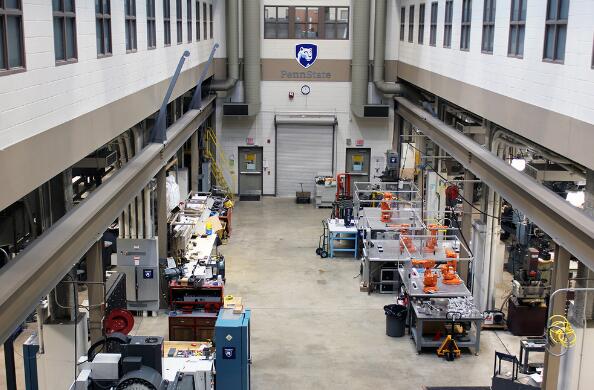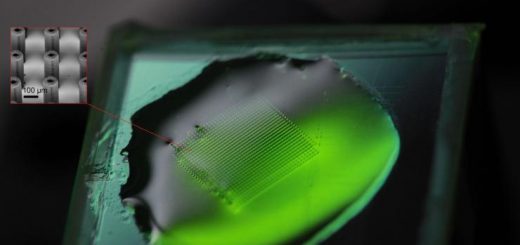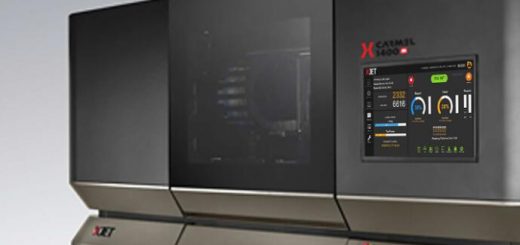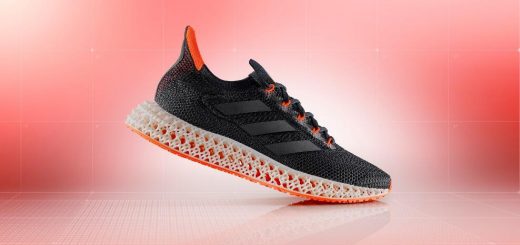PennState“super-finishing lab”Researchers Receive Grant to Manufacture Metal Parts for Naval Applications
Penn State researchers have received approximately $535,000 to install a state-of-the-art, “super-finishing lab” for 3D-printed metal parts. The new lab will complement the existing subtractive processing technology in the Factory for Advanced Manufacturing Education Lab within the Harold and Inge Marcus Department of Industrial and Manufacturing Engineering.
Together the machinery will provide the subtractive processing capability necessary to transform printed parts into components ready for product assembly. The equipment in the FAME Lab, which is physically located in the Leonhard Building on West Campus, University Park, will be used for both the instruction of engineering students as well as academic research.

The new super-finishing lab will be installed in the Factory for Advanced Manufacturing Education Lab, a 10,000-square foot-integrated high bay laboratory for teaching and research, within the Leonhard Building. Image: Penn State
Funding for the one-year project, titled “Super Finishing of Printed Metallic Parts for High Performance Naval Systems,” is being provided by the Defense University Research Instrumentation Program, which operates through the Department of Defense’s Office of Naval Research.
“The Navy has a strong interest in identifying and researching the technical issues of using 3D-printed metal parts for naval applications now and in the future,” said De Meter,a professor in the Marcus department, the principal investigator on the project. “They want to better understand how to design parts while identifying potential barriers and also benefits that may arise between the metal printing process and any secondary processing that is done to smooth out the surface texture of these parts.”
Metal parts can be printed to near net shape, but require thermal processing to improve their material properties and hard tool machining processes to remove supports and create functional surfaces, according to De Meter.
“Super-finishing processes are used to remove burrs and to smooth surfaces. All three post processes are needed to produce parts for demanding national defense applications, which include jet engines and sea vessels,” he said.
Functional surfaces of the parts need to have extremely tight geometric control and a very smooth surface finish, explained De Meter. If a part is subjected to a lot of cyclic loading (i.e. force, vibration, etc.), and has rough surfaces, it promotes the formation of cracks and premature failure of the parts.
“In parts like those the Navy uses, there are a number of internal passageways involved,” he said. “If the part is printed and the finish of the passageway is rough, it’s going to interfere with the flow; or if there are loose particles from the printing process in any crevice of the part, and they break free during the application, it can cause not only the part to fail but the entire system to fail.”
Joining De Meter on the research team are Rich Martukaniz, director of Penn State’s Center for Innovative Materials Processing through Direct Digital Deposition (CIMP-3D) and head of the Laser Processing Division in the Applied Research Laboratory; Saurabh Basu, assistant professor of industrial and manufacturing engineering; Guha Monogharan, assistant professor of mechanical engineering; Hojong Kim, assistant professor of material science and engineering; Todd Palmer, professor of material sciences and engineering and engineering science and mechanics; Edward Reutzel, associate research professor with the Applied Research Lab; Tim Simpson, Paul Morrow Professor in Engineering Design and Manufacturing; Jingjing Li, William and Wendy Korb Early Career Professor in the Marcus department; and Robert Voigt, professor of industrial and manufacturing engineering.
De Meter said the group’s focus of the initial research proposal was threefold. First and foremost, it is to establish expertise on how parts made using additive manufacturing (AM) processes will react when they are super finished and installed in complex assemblies. That general processing knowledge could then be shared via best practices to the overall community because, according to De Meter, such public information does not currently exist.
Secondly, the team wants to look into the finishing of metal parts that feature tight lattice structures to find out if the processes are able to polish some of the intricate passageways of the parts.
“If we find out there are deficiencies in finishing these parts, which we suspect there will be, that’s where we will want to work on process development,” said De Meter.
The third component of interest for the researchers is education. The vision of the team is to create graduate-level courses that could be offered online to employees of those companies who use the finishing processes on 3D-printed metal parts.
“It’s more convenient and economical for these employees to take some courses online than it would be for a company to pick up the cost of sending them off-site to learn about these technologies,” said De Meter.
The potential for future research based on the project is huge as a number of interdisciplinary departments and research centers at Penn State are heavily invested in AM technologies.
Resource: Penn State




Recent Comments